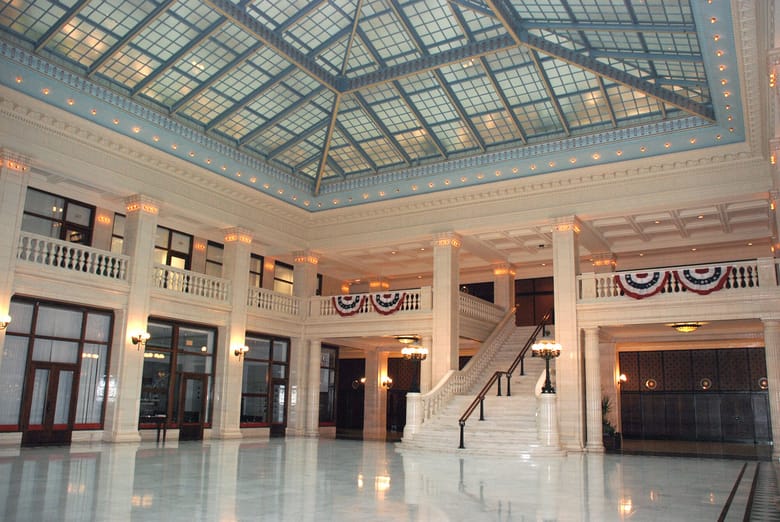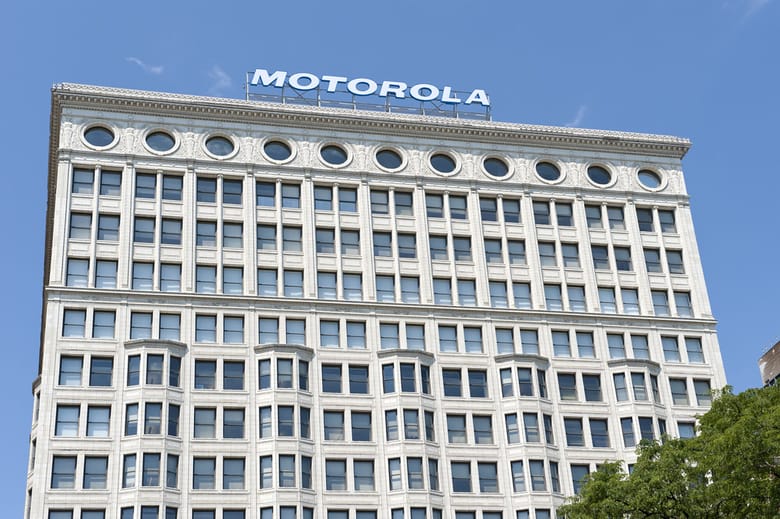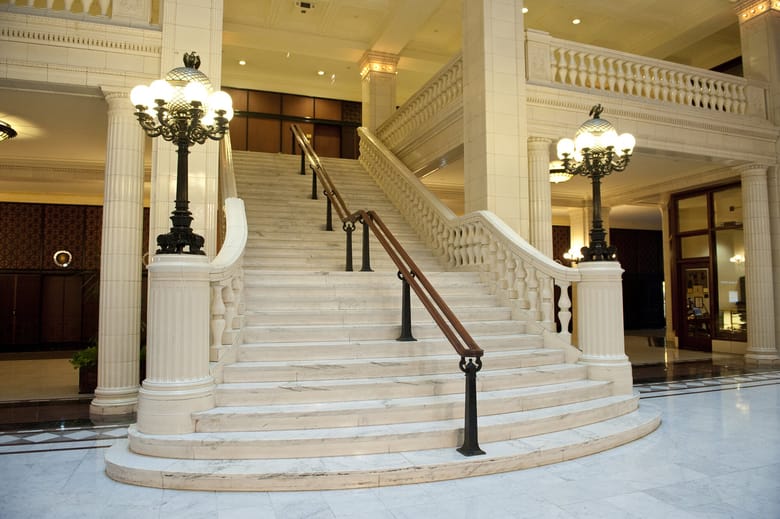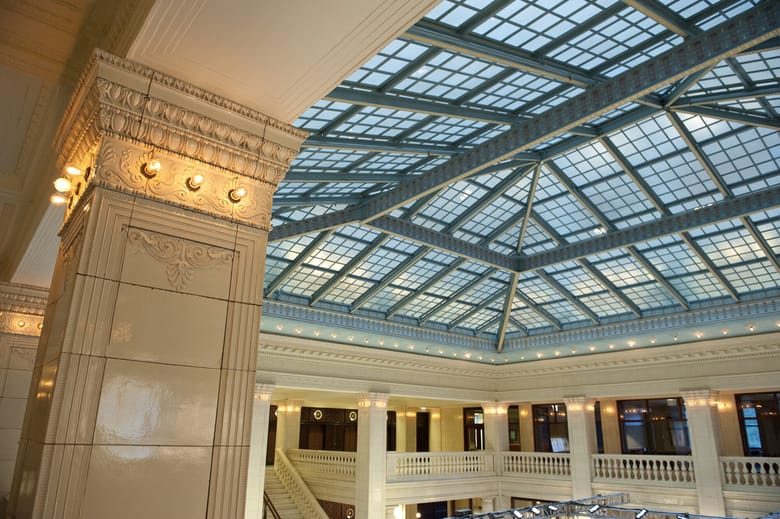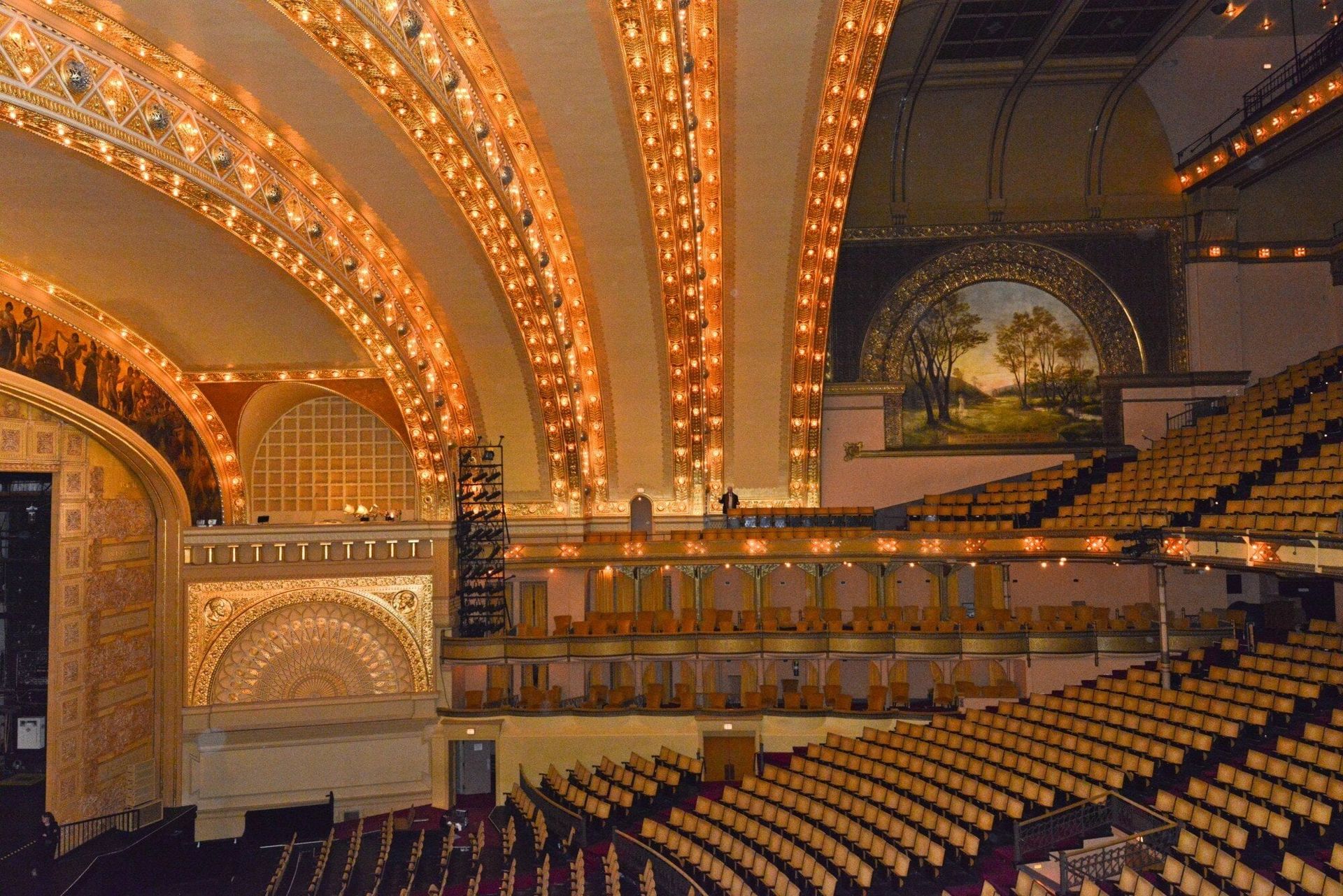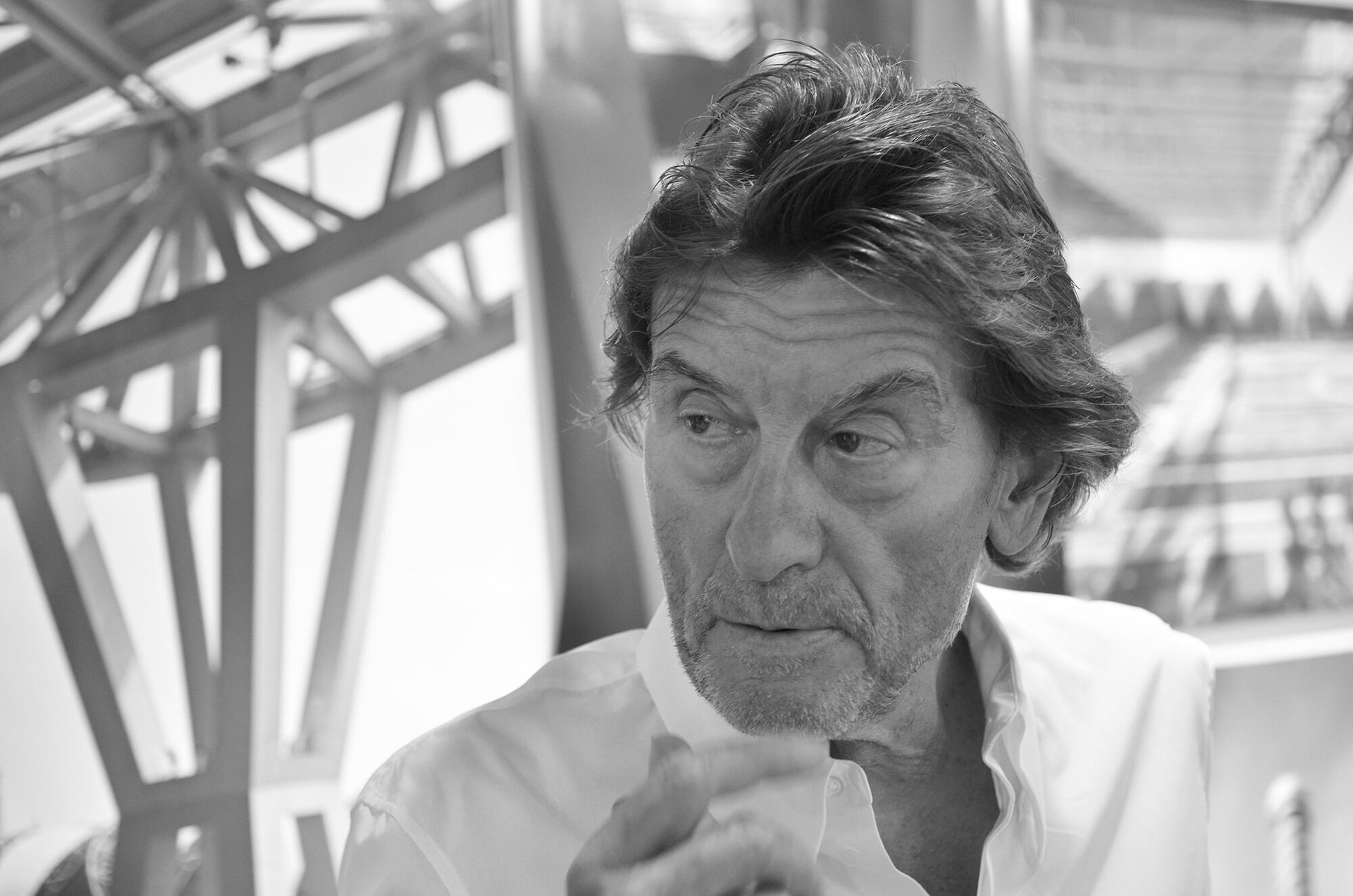The building is directly tied to critical aspects of Chicago’s history and status as a preeminent center of architectural innovation.
RAILWAYS CONVERGE
Chicago has long been an important railroad center, beginning with the Galena and Chicago Union Railroad in 1848. By 1900, there were six passenger terminals downtown, and 15,000 people worked for the railroads. As a result of this large employee population, administrators needed affordable office space.
The Santa Fe Railroad approached the renowned architecture firm of D.H. Burnham to solve this problem. The proposed new Railway Exchange Building would be shared by the Santa Fe and several other railroads.
A CLASSIC CHICAGO OFFICE BUILDING
Burnham’s designs for the World’s Columbian Exposition, just 11 years earlier, popularized the Greek and Roman-inspired Classical architectural styles in Chicago. The glazed white terra cotta of the Railway Exchange echoes the famed White City. Like many tall office buildings of the time, it’s vertically organized with a heavy base, a repeating shaft and an ornate capital—like a column.
Burnham, along with chief designer Frederick Dinkelberg, went to great lengths to bring light and air inside. The entire building wraps around a central light well, like a square doughnut, with a glass atrium capping the grand two-story lobby. The steel skeleton frame allows for larger windows, and the projecting bays increase the amount of light streaming inside, bringing great visual interest to the building’s facade.
A HOME FOR GOOD DESIGN
Burnham immediately moved his firm into the building upon completion. His offices offered commanding views of Michigan Avenue and Lake Michigan. The railroad corporations who once occupied the building moved out over time, and today a number of well-known architecture firms call the building home.
Did you know?
In the 1980s, the Railway Exchange Building's light well was enclosed at the top, and the interior windows and walls were opened up.
Did you know?
The circular porthole windows on the top floor of the Railway Exchange Building are six feet in diameter.
Did you know?
Daniel Burnham and Edward Bennett created the 1909 Plan of Chicago in a small penthouse added to the roof of the Railway Exchange Building.
Watch: Railway Exchange Building
The Railway Exchange Building is a standout on the Michigan Avenue streetwall, with its gleaming white facade commanding attention. The building is directly tied to critical aspects of Chicago’s history and status as a preeminent center of architectural innovation.
